That’s not a hippo, a pig, or an anteater; it’s a tapir!
Closely related to horses and rhinos, tapirs have a unique appearance. As adults, they’re all one color. However, tapirs have an adorable watermelon pattern covering their bodies when they’re babies. What else should you know about these hog-like animals?
Read on to learn 10 incredible tapir facts.
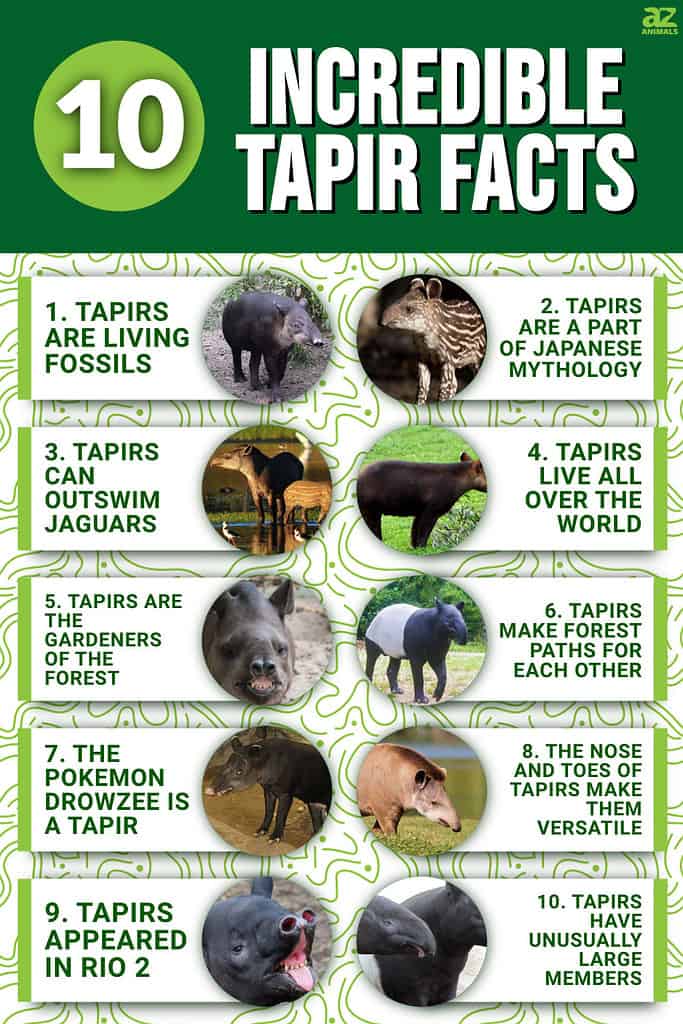
1. Tapirs Are Living Fossils

The first tapirs were about half the size of the tapirs we know today.
Tapirs are living, breathing fossils. They’ve been in existence since the Eocene. That means they’ve survived numerous extinction waves that took out other animals. The Eocene period was the geological epoch that took place around 56 to 33.9 million years ago.
During the early Eocene, many animals were small, weighing less than 10g. The first tapirs were about half the size of the tapirs we know today.
2. Tapirs Are a Part of Japanese Mythology
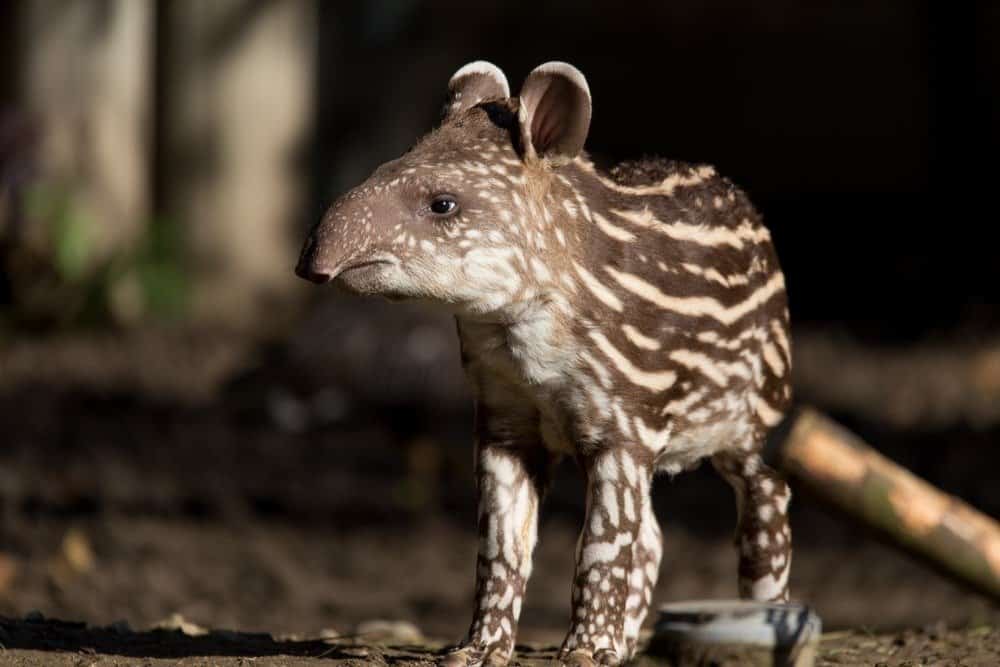
There’s a mythological creature in Japanese culture that greatly resembles the Asian tapir.
©Artush/Shutterstock.com
Next on our list of incredible tapir facts, let’s talk about their role in Japanese folklore. There’s a mythological creature, Baku, in Japanese culture. Stylizations of the animal Baku greatly resemble the Asian tapir.
The tapir-like creature eats nightmares. According to legend, Baku was made from leftover bits when the gods were done creating other animals. Baku has a long-standing history in Japanese mythology, art, and folklore. The creature also appears in manga and anime.
3. Tapirs Can Outswim Jaguars
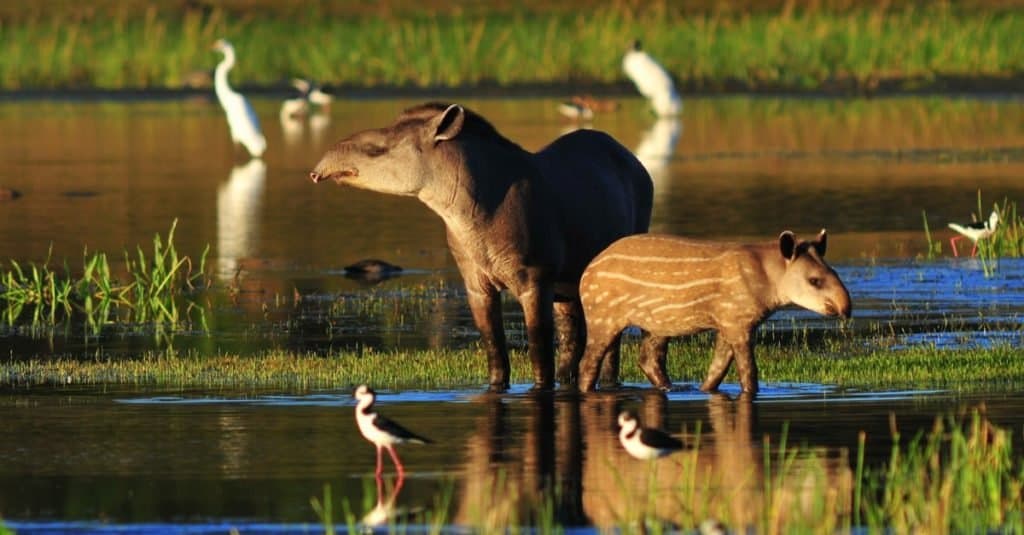
Tapirs are agile swimmers.
©Lucas Leuzinger/Shutterstock.com
Picture it; a 6 ft long, 550-pound tapir gallops to the water. Running away from a hungry jaguar, the hog-like body jumps into the river. You expect the worst, but then something surprising happens. The tapir gets away!
Despite the tapir’s large size, it doesn’t have trouble quickly maneuvering through the water. Tapirs have been swimming for a long time and are incredibly good at it.
A tapir’s strong swimming abilities allow it to cross large rivers and run from hungry predators. Additionally, tapirs also have to watch out for pumas. Pumas are a type of wildcat that like to attack tapirs at night.
4. Tapirs Live All Over the World
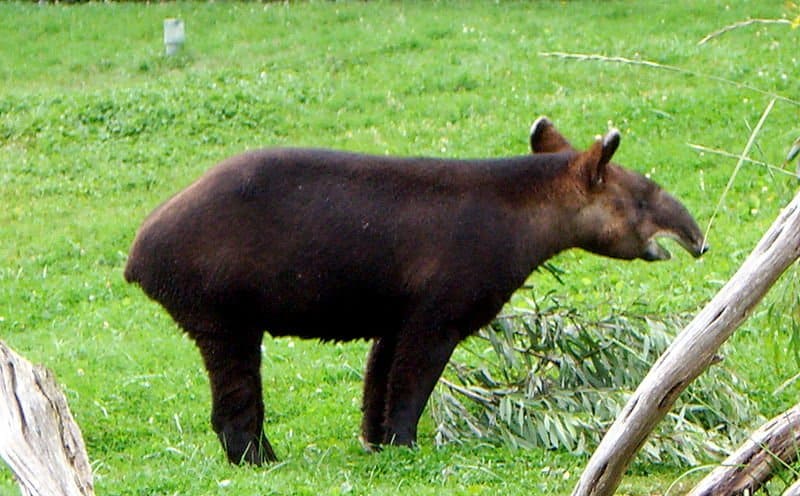
Tapirs have a healthy population from Southern Mexico,
Brazil
,
Venezuela
, and Paraguay.
Where should you go to see tapirs in the wild? They live all over the world! A lot of tapirs live in South America. You can find healthy populations from Southern Mexico, Brazil, Venezuela, and Paraguay.
The only exception is the Malayan tapir. The Malayan tapir thrives in Asia. You can find healthy Malayan tapir populations in Burma, Malaya, Sumatra, and Thailand.
5. Tapirs Are the Gardeners of the Forest
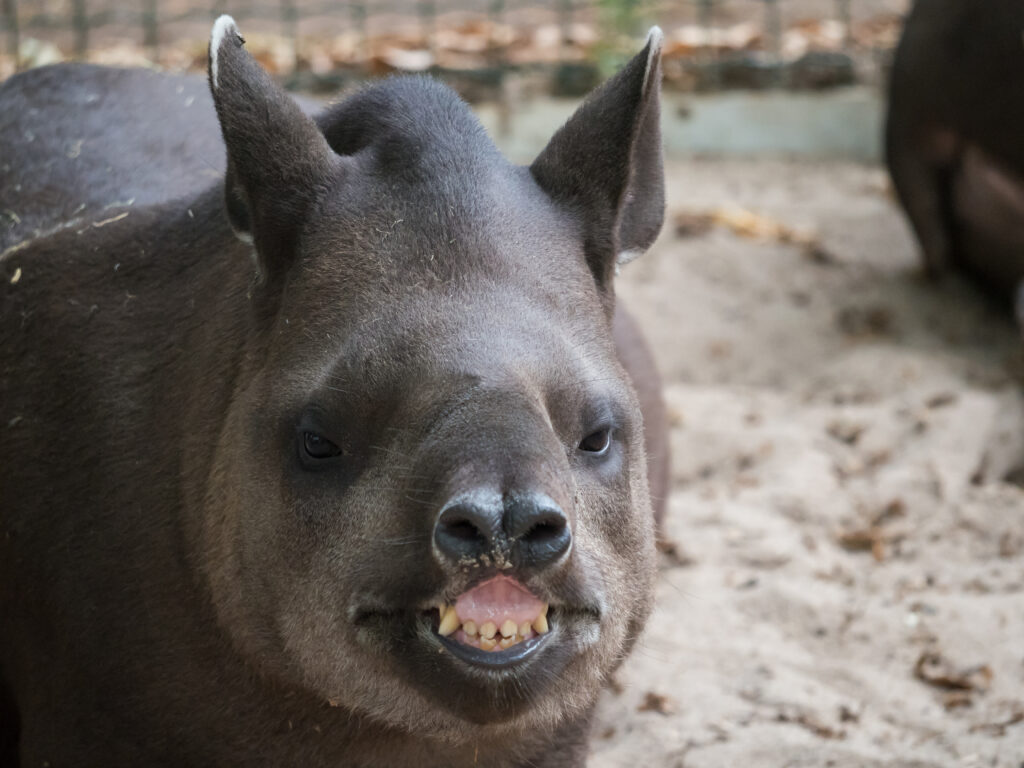
Tapirs are called the “gardeners of the forest” because they disperse seeds perfectly.
©Chrissi4788/Shutterstock.com
Farmers and gardeners have something in common with tapirs; they’re all great at planting seeds. It’s one of the most exciting incredible tapir facts. Tapirs are the perfect seed dispersers, that’s why they’re called “gardeners of the forest .”
They eat all sorts of seasonal fruits and then deposit them in their scat. Those seeds can sprout new fruit trees, helping to keep the forest lush. The forest diversity and structure would be completely different if there weren’t tapirs.
6. Tapirs Make Forest Paths for Each Other
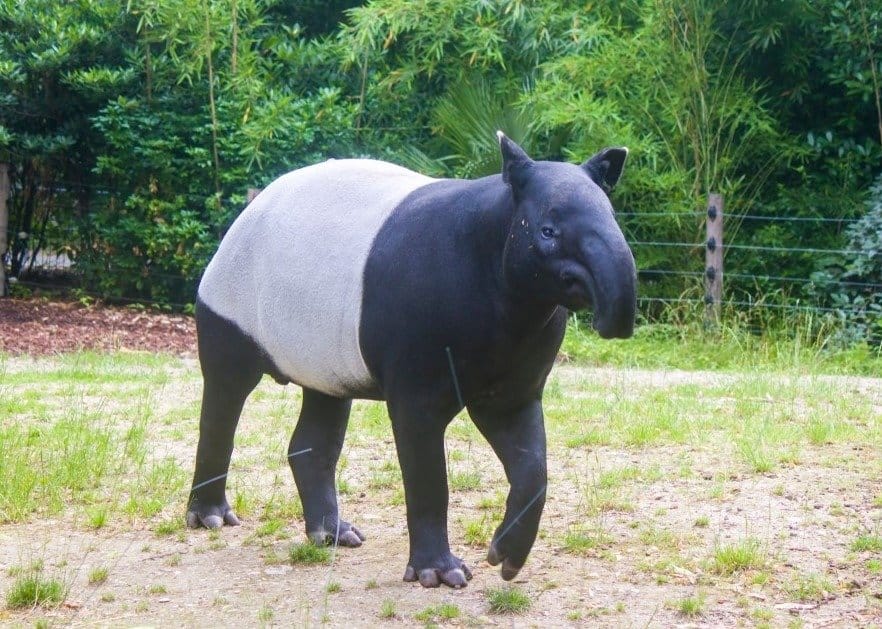
Scientists call tapirs an umbrella species which are also known to have a wide-ranging habitat.
©Danny Ye/Shutterstock.com
Tapirs strategically maneuver even the densest forest thanks to premade paths. When it’s time to find delicious food or watering holes, tapirs will look for trails made by another candle (group of tapirs). When they find a watering hole, tapirs dive to the bottom to eat tasty aquatic vegetation.
Scientists call tapirs an umbrella species. Umbrella species have a wide-ranging habitat, covering a lot of ground and looking for prime vegetation. Examples of umbrella species include monkeys, deer, certain bird species, reptiles, and wildcats.
7. The Pokemon Drowzee Is a Tapir
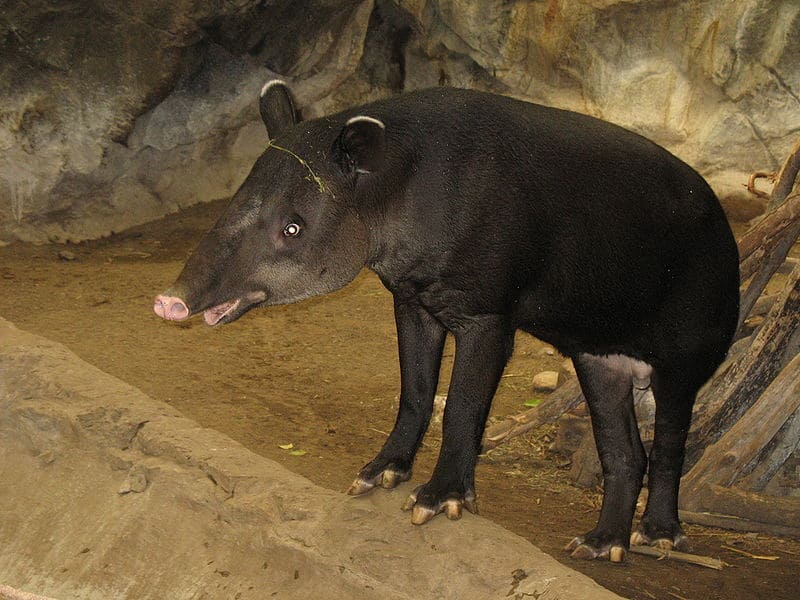
All it takes is one peek at the pokémon character, and you’ll be able to see the tapir-like resemblance.
©Sasha Kopf, CC BY-SA 3.0, via Wikimedia Commons – Original / License
Incredible tapir facts extend to Pokemon! Many Pokemon characters are based on real animals, including tapirs. Tapirs are the inspiration for the Pokemon Drowzee, a psychic type of Pokemon. All it takes is one peek at the pokémon character, and you’ll be able to see the tapir-like resemblance.
When Drowzee evolves, it turns into Hypno and has strong hypnotic capabilities. It might seem strange that a Pokemon that puts people to sleep is associated with a tapir. Although, it all dates back to a Japanese mythological tale.
8. The Nose and Toes of Tapirs Make Them Versatile

Tapirs have a large prehensile nose.
©Janusz Pienkowski/Shutterstock.com
Tapirs have 4 toes on their front feet and 3 toes on their back. Their unique toes help them sprint through dense forest brush.
Tapirs also have a prehensile nose. The nose can wiggle and grab leaves when they’re foraging for food. When swimming, tapirs can use their nose as a snorkel! It helps them be fast, agile swimmers.
9. Tapirs Appeared in Rio 2
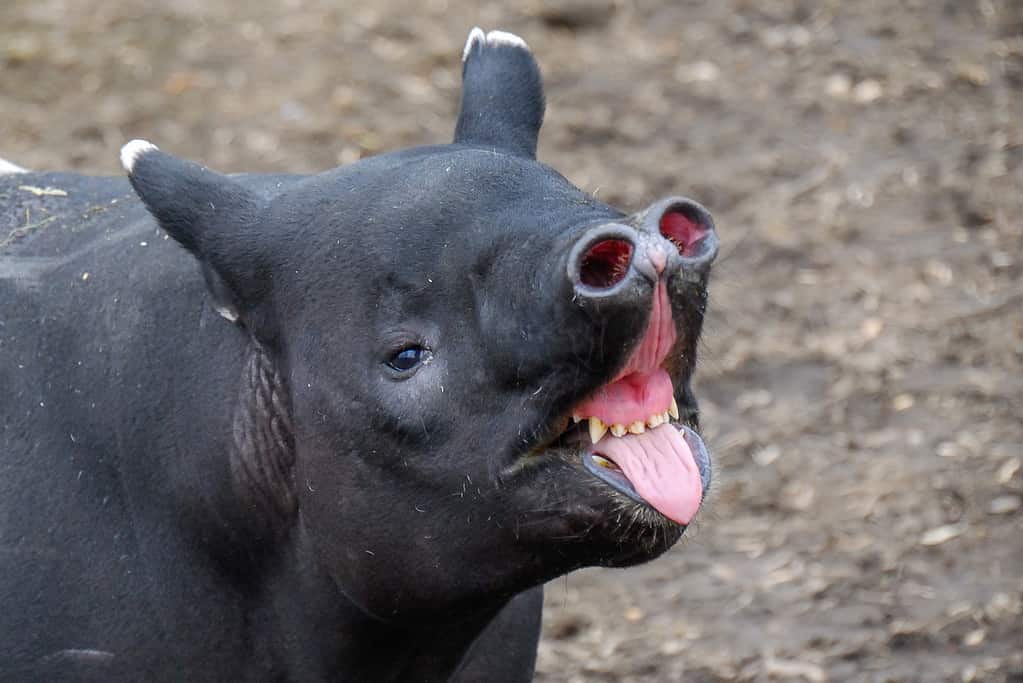
You can also find tapirs (and lots of other wildlife) in the animated family film Encanto.
©Marek Rybar/Shutterstock.com
Have you seen the fun animated family comedy movie Rio 2? Tapirs make a special appearance! The movie features many animals, including blue macaws, capybaras, and even Amazon River dolphins.
One of the most endearing characters is the tapir game announcer. He’s loud, bombastic, and narrates the entire game with a special sense of flair. He even annoys his porcupine co-host when yelling in his ear. Pablo Ramirez does the voice of the tapir.
Do you want to see more adorable animated tapirs? You can also find tapirs (and lots of other wildlife) in the animated family film Encanto.
10. Tapirs Have Unusually Large Members

A tapir has a very strong prehensile penis and is also very long. It can appear as another leg.
©Just chaos, CC BY 2.0, via Wikimedia Commons – Original / License
Finally, on our list of incredible tapir facts, they’ve been getting attention in the media. It’s all thanks to their unique prehensile penis. A tapir has a very strong prehensile penis and is also very long. It can appear as another leg. There are a lot of photos on the internet and on news channels showing tapirs using their prehensile penises to scratch their back.
One of the reasons they have such strong genitalia has to do with their method of copulation. Their member can create a gripping effect. It helps ensure their successful survival millennia after millennia. Other animals with unique genitalia include dolphins, whales, barnacles, and slugs.
Thank you for reading! Have some feedback for us? Contact the AZ Animals editorial team.







